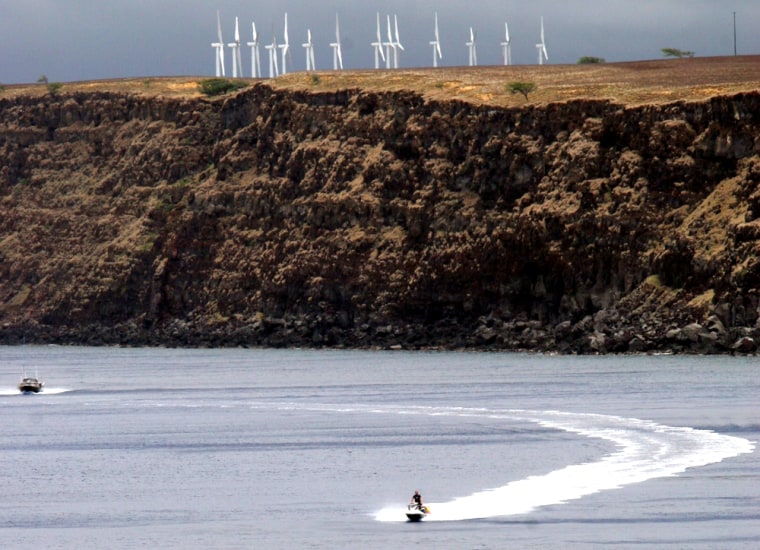Hawaii's largest utility signed onto plans for a future filled with renewable energy, electric cars and stable power supplies as the islands strive to become energy independent.
Hawaiian Electric Co. and Gov. Linda Lingle inked an agreement earlier this month to move the state away from dependence on fossil fuels for electricity and ground transportation.
But some of the biggest ideas in the deal — including expensive undersea power cables to move wind-generated energy between the islands — lack funding or even cost estimates for how they'll become reality.
The transition from fossil fuels to renewable energy is a major step for Hawaiian Electric, said Connie Lau, chairwoman of the board of directors for the utility, which powers Oahu, Maui and the Big Island.
"This is a historic moment for all of us, and it really does take us far beyond what our companies have done historically," Lau said. "(It) will protect our customers in the long run from these severe fluctuations in oil prices."
Goal: 70 percent renewable by 2030
The goal is to create 70 percent of Hawaii's energy use from clean energy sources by 2030. Currently, the state gets about 10 percent of its energy from renewable sources.
The accord seeks to make renewable energy easier to use by integrating it into the power grid.
Under the agreement, Hawaiian Electric commits to not build any new coal plants, integrate up to 1,100 megawatts of renewable energy into the power grid and convert existing fossil fuel generators to biofuels using locally grown crops.
"We don't have years and years anymore to make these changes," Lingle said. "These are not hopes or dreams or wishes, these are our specific plans that we hope to achieve."
The undersea cables, which could cost hundreds of millions of dollars, would link potential wind farms on Lanai or Molokai to population centers on Maui and Oahu.
It's unclear exactly where the money will come from. Private companies could step in, the state may pursue revenue bonds, or Sen. Daniel Inouye, D-Hawaii, could seek federal funds.
'Most vulnerable' state
Inouye said it's essential that Hawaii emphasize its energy independence efforts because of the state's isolation and the steady long-term rise of oil prices.
"It's not going to be easy, but we must do it, because of all the 50 states in the union, our state is the most vulnerable," Inouye said. "We have no fossil fuels, so we have to manufacture our own energy."
Additional parts of the plan call for:
- Creating incentives to encourage adoption of electric vehicles.
- A requirement that 40 percent of electric power come from renewable sources by 2030. An additional 30 percent of clean energy savings would come from consuming less and using power more efficiently.
- Changing the way Hawaiian Electric is compensated by moving away from a business model that relies on increased electric sales.
- Making it easier for customers to get credits for electricity contributed to the power grid from home solar or wind systems.
The agreement stems from the Hawaii Clean Energy Initiative, a partnership between the state and the federal Department of Energy launched in January with the goal of making Hawaii a model for how the United States can become energy independent.
The state is working separately with Kauai Island Utility Cooperative on similar proposals.
